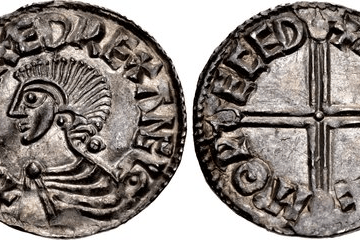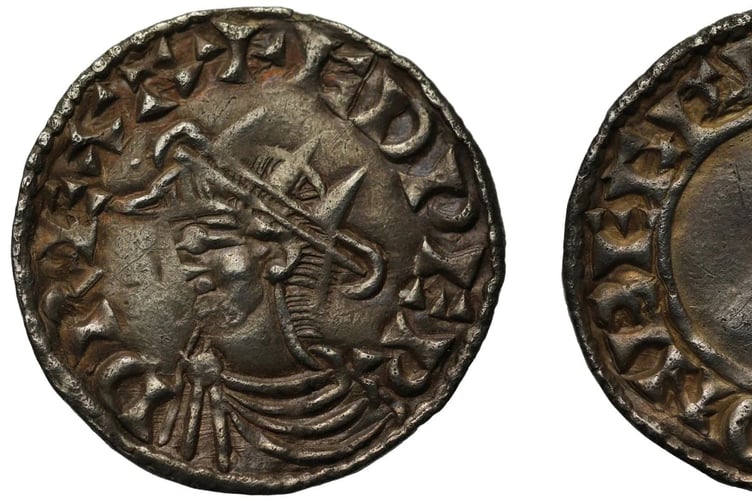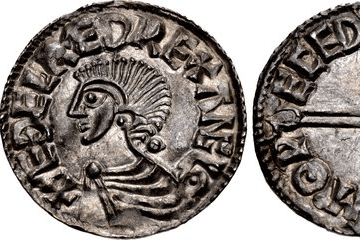Two rare Saxon coins minted in Watchet will go on display at the Watchet Market House Museum from March. They are being loaned to the museum by Carhampton resident Cliff Barber.
The oldest of the two coins was minted in Watchet under the reign of King Aethelred II, who ruled with a short interruption from the year 978 to 1016. Also known by the epithet Aethelred the Unready, his reign was the longest of any English king until Henry III broke his record in the 13th century. Aethelred earned infamy for his ordering of the St Brice's Day Massacre in which Danish settlers were 'exterminated' in Oxford.

The coin is a silver penny, which was the standard for Saxon coins. Curator and Chairman of the Watchet Market House Museum Jimmy Nicholson said: "It is of interest because the mint was set up during King Alfred the Great's time up on Cleve Hill. The Vikings knew there was silver in Watchet, that's one of the reasons why they raided. Watchet's silver was even used to pay off the Danes."
The so-called monyer, the man who minted the coin, is recorded as being named Sigeric. In Saxon times the monyer was an important position, held by a responsible man of property in order to give credibility to the money he made.
The second item for display is a coin minted in Watchet under the reign of Edward the Confessor. Edward is considered the last king of the House of Wessex. He ruled from 1042 until his death in 1066 when he was succeeded by Harold Godwinson, famed for leading the English army against William I of Normandy at Hastings.

This coin is also a silver penny, weighing in at 1.1g. It is said to be of the highest rarity, being one of only 4 known examples of its kind.
Jimmy Nicholson said: "It is of the short cross type - in the middle of the coin there is a short cross - whereas others have a long cross. They used to cut them in half along the cross to make a half penny."
The monyer of the coin is recorded as being named Godcild.
Cliff Barber's Saxon coins will join two other Roman coins he has on display at the museum, which depict Romulus and Remus. Romulus and Remus are said to have been the founders of the city of Rome, and according to legend were raised in the wild by a wolf.
The Watchet Market House Museum will be open on March 18 and 19, and thereafter from March 25, Saturday to Thursday for the rest of the season.





Comments
This article has no comments yet. Be the first to leave a comment.